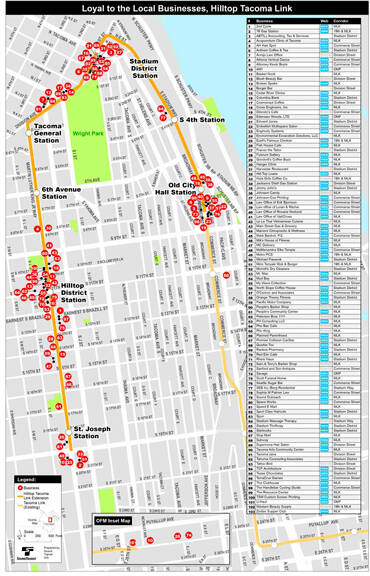By Morf Morford, Tacoma Daily Index
If you have travelled through the Stadium or Hilltop neighborhoods in the past year or so, you could not miss the tracks, road closures and seemingly eternal construction signs, crews and obstructions.
As much as many of us might find it hard to believe, this disruption is not forever.
And, equally hard to believe will be the discoveries many of us will make when the dust and obstacles are taken away.
No doubt about it, the past few years have been a struggle.
For Tacoma’s Hilltop and Stadium Districts it has not been a distant, ideological struggle against culture war tirades on cable news or political extremists’ hand-wrings about the state of the nation; for Hilltop and Stadium residents and visitors, the intrusions have been immediate. And constant. And sometimes hazardous.
Some of us have had the luxury of avoiding the construction zones.
And in our absence, work is coming to an end, and some established businesses have moved on, but many have stayed, and many new ones have sprouted up.
In short, Tacoma’s Hilltop and Stadium Districts have survived – even flourished.
Tacoma’s Hilltop and Stadium Districts have done what they always do; shifted and changed with the demands of a new economy and ever-changing challenges and opportunities, but somehow, to a large degree, keeping the essential character of the area.
Different and not so different
My first impression when I heard of the planned Link extension along MLK was something like, “Why would they connect two hospitals?”
While it might be true that two major hospitals (Tacoma General and St. Joseph’s) are in fact being connected, it is also much more than that.
Two neighborhoods are being connected.
And as in any community or relationship, there is more to the neighborhood than just the sum of its parts.
Tacoma’s Hilltop and Stadium Districts, for example, were independent, local and walkable long before those became defining trends and topics in modern urban seminars and study groups.
Consider the below map and list of businesses, services and agencies along the route of the Link.
There are very few nationally known chain stores or even coffee shops.
These are not your usual suburban strip-mall look-alike familiar and predictable retailers.
These are, for the most part, local people, many who live in the area, pursuing a vision and a livelihood, often in spite of overwhelming difficulties from costs to crime to construction blockades.
These are people who have invested not only in their business, or even in their neighborhood, but in the future of Tacoma – and the larger region.
They, far more than the big chains, warrant our support and patronage.
And they offer a level of craft and attention the big box stores could never offer.
As you can see, many of the businesses are in clusters – mostly anchored around the Link stations.
Some, like Johnson Candy, Rankos or The Harvester Restaurant, have been in business for decades. Others, like Red Elm or Broken Spoke are relatively new (as in the past ten or so years).
While others are brand new or even just emerging.
Being there
In some ways, the two neighborhoods are not so different.
The Stadium District is easily the most densely populated neighborhood of Tacoma – and Pierce County.
With new apartment buildings and condos going up and historic apartments, large and small, that have stood since long before World War II, many people have made this area their home – however temporary or permanent.
The Hilltop area, with not so many apartments, holds many homes built by first generation immigrants mostly from Italy, Russia and Norway with gardens, small orchards and architectural features from the Old Country.
And, in many cases, The Hilltop area is the last bastion of even remotely affordable single-family housing for families looking for walkable proximity to the downtown area.
The Link
This Link extension more than doubles the length of the Tacoma Link.
It starts with a relocated Theater District station, and adds six new stations.
These connect to popular destinations such as the Stadium District, Wright Park and major medical facilities before reaching the new and historic Hilltop neighborhood.
Once operational, the Link will run every ten minutes.
We can expect full service some time in 2023.
Editor’s note: I am far from an urban planner, and I know nothing of the complications involved, but my suggestion would be to continue the line south on MLK and connect with South 25th (or 19th) and turn east and connect with the Link on Commerce, making an entire loop.
*****
To print your own copy of the map go here – Sound Transit)





